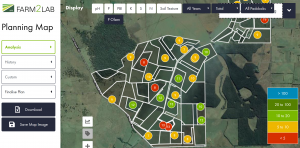May 6, 2020
Livestock producers can capitalise on high livestock prices by making the most of home-grown feed. The first step in doing this is soil testing.
Recent widespread rain will provide some much-needed moisture for pastures, but getting nutrition right will give them the biggest boost. APAL can help livestock producers give their pastures a boost by providing soil analysis in a timely manner.
According to Meat & Livestock Australia and Australian Wool Innovation’s Making More from Sheep initiative, it is very hard to assess the nutrient levels of the different soil types or management units on a property without gathering some objective information.
Soil testing will identify whether macro elements – phosphorous, potassium, sulphur and nitrogen – are limiting pasture growth and also provide information about soil health, particularly acidity, salinity and sodicity.
Find out why agronomist Greg Mitchell soil tests pasture paddocks with APAL.
Tips for soil sampling pasture paddocks
More information is available on the Dairy Australia website.
Figure 1: Map of Olsen P soil tests in Farm2Lab
